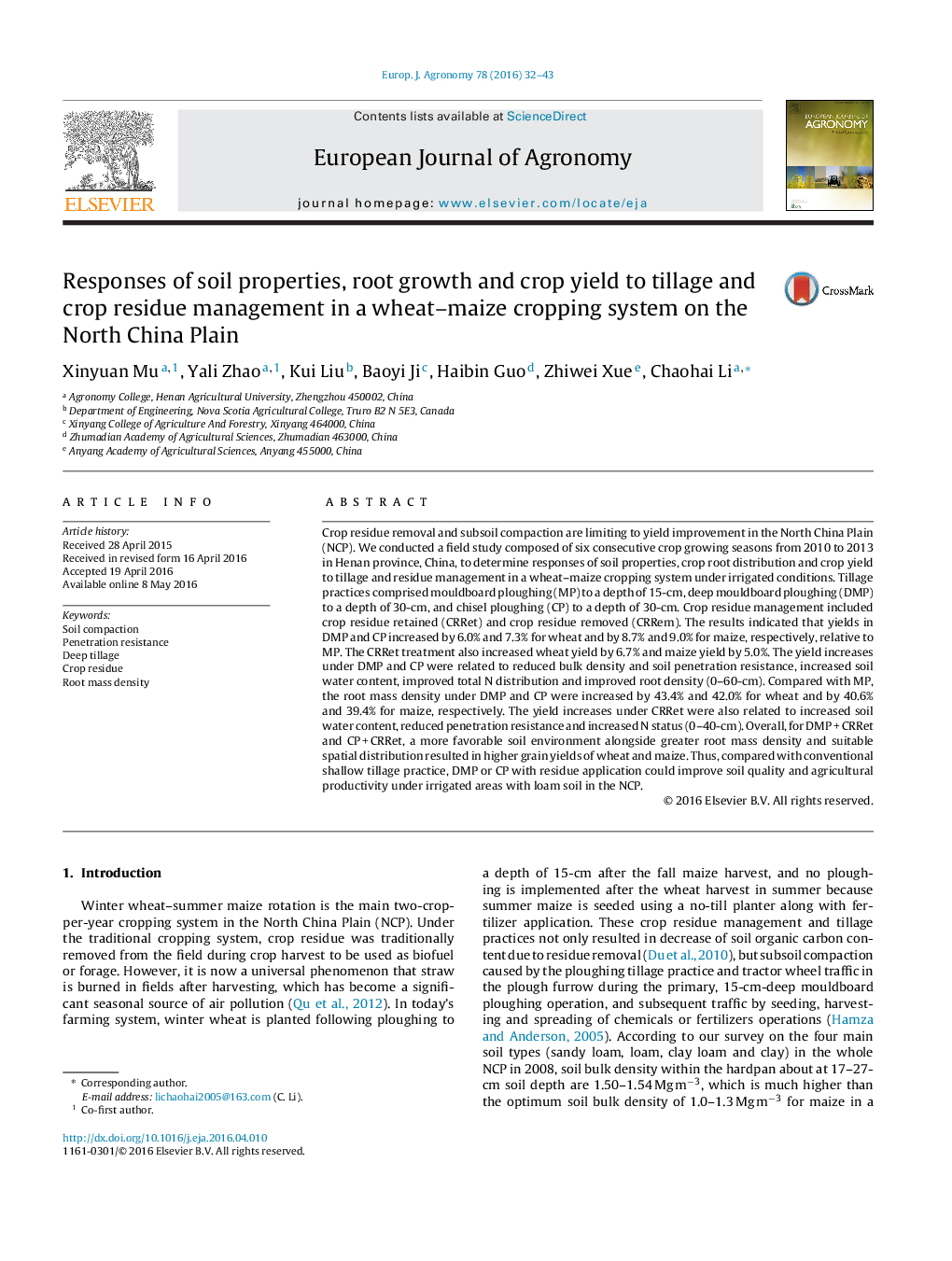| کد مقاله | کد نشریه | سال انتشار | مقاله انگلیسی | نسخه تمام متن |
|---|---|---|---|---|
| 4508676 | 1624447 | 2016 | 12 صفحه PDF | دانلود رایگان |
• Higher yields for deep tillage due to lower soil bulk density and improved root growth.
• Greater yields for residue application caused by higher soil moisture and soil N.
• Tillage practices alter N distribution without affecting N stock.
• Residue return not only increased N concentration, but also N stock.
Crop residue removal and subsoil compaction are limiting to yield improvement in the North China Plain (NCP). We conducted a field study composed of six consecutive crop growing seasons from 2010 to 2013 in Henan province, China, to determine responses of soil properties, crop root distribution and crop yield to tillage and residue management in a wheat–maize cropping system under irrigated conditions. Tillage practices comprised mouldboard ploughing (MP) to a depth of 15-cm, deep mouldboard ploughing (DMP) to a depth of 30-cm, and chisel ploughing (CP) to a depth of 30-cm. Crop residue management included crop residue retained (CRRet) and crop residue removed (CRRem). The results indicated that yields in DMP and CP increased by 6.0% and 7.3% for wheat and by 8.7% and 9.0% for maize, respectively, relative to MP. The CRRet treatment also increased wheat yield by 6.7% and maize yield by 5.0%. The yield increases under DMP and CP were related to reduced bulk density and soil penetration resistance, increased soil water content, improved total N distribution and improved root density (0–60-cm). Compared with MP, the root mass density under DMP and CP were increased by 43.4% and 42.0% for wheat and by 40.6% and 39.4% for maize, respectively. The yield increases under CRRet were also related to increased soil water content, reduced penetration resistance and increased N status (0–40-cm). Overall, for DMP + CRRet and CP + CRRet, a more favorable soil environment alongside greater root mass density and suitable spatial distribution resulted in higher grain yields of wheat and maize. Thus, compared with conventional shallow tillage practice, DMP or CP with residue application could improve soil quality and agricultural productivity under irrigated areas with loam soil in the NCP.
Journal: European Journal of Agronomy - Volume 78, August 2016, Pages 32–43
